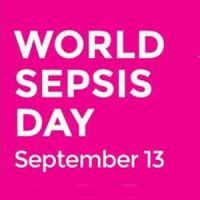Corticosteroid use in the care of critically ill patients has been the subject of ongoing research with conflicting findings. There is a growing interest in understanding their role in treating a common source of sepsis: community-acquired pneumonia (CAP). Some studies have focused on determining whether corticosteroids provide clinical benefits to patients with the most severe clinical presentation and highest mortality rate of CAP: Severe Community-Acquired Pneumonia (sCAP).
Corticosteroids are beneficial in patients with high systemic inflammatory response and acute respiratory distress syndrome (ARDS). They may also benefit patients with underlying chronic obstructive pulmonary disease (COPD) or asthma. However, some studies have not found significant advantages of corticosteroid therapy in terms of mortality or treatment failure in CAP and have raised concerns about potential harm, including an increased risk of secondary infections and delayed pneumonia resolution.
A recent systematic review and meta-analysis by Jheng-Yan Wu et al. evaluated the effectiveness and safety of adding corticosteroids to treat sCAP. Their findings indicated that corticosteroids in sCAP patients could improve survival rates and clinical outcomes, including reducing mortality and the duration of mechanical ventilation. Additionally, they suggest that corticosteroids might have a role in treating sCAP even without initial septic shock. However, the interpretation of their results differed from the authors of the sCAP guidelines, even though the technical aspects of the meta-analyses aligned closely.
The interpretation of the study by Jheng-Yan Wu et al. regarding the use of corticosteroids in severe community-acquired pneumonia (sCAP) is contested for two main reasons:
- Inconclusive Evidence: The trial conducted by Dequin et al., which included 800 patients receiving either corticosteroids or placebo, showed a significant reduction in deaths in the corticosteroids group. However, this trial had unique aspects, such as using hydrocortisone as the corticosteroid and excluding patients with septic shock at baseline. Their study also reported a reduced risk of intubation or receiving vasopressors in the hydrocortisone group. As a result, the data from Dequin et al. was only included in the analysis related to shock, as it was unclear whether these patients had septic or other forms of shock. This trial contradicts findings from the second-largest trial by Meduri et al., which found no benefits from corticosteroids. The Meduri trial included 600 patients and used a different corticosteroid, methylprednisolone. The discrepancies in outcomes could be attributed to differences in dosage, antibiotic regimens, and changes in the identification and classification of sCAP based on organ failure. Thus, evidence on this topic is far from conclusive.
- Risk of bias: In the meta-analysis by Jheng-Yan Wu et al., authors were less strict in their risk of bias assessments compared to the sCAP guidelines and this meta-analysis that were stricter. For example, four out of seven trials were rated as having unclear risk of bias in allocation concealment and blinding of outcomes when assessing ICU mortality. In addition, the guidelines included some subgroup analyses that Jheng-Yan Wu et al. did not assess, such as the development of shock, mechanical ventilation-free days, and cardiac complications.
Overall, while there is a promising signal for improved outcomes with corticosteroid use in sCAP, the evidence is not yet definitive. Additional research is necessary to fully understand the effectiveness and proper use of corticosteroids in treating sCAP. This is especially crucial when considering specific patient subgroups, such as elderly patients, where corticosteroids might be associated with harmful effects like opportunistic infections, bleeding, and neuropsychiatric side effects. The decision to use or not use corticosteroids in sCAP treatment should be based on individual patient factors, including the severity of the illness, underlying medical conditions, and a careful assessment of the potential risks and benefits of therapy.
Source: Critical Care
Image Credit: iStock

























